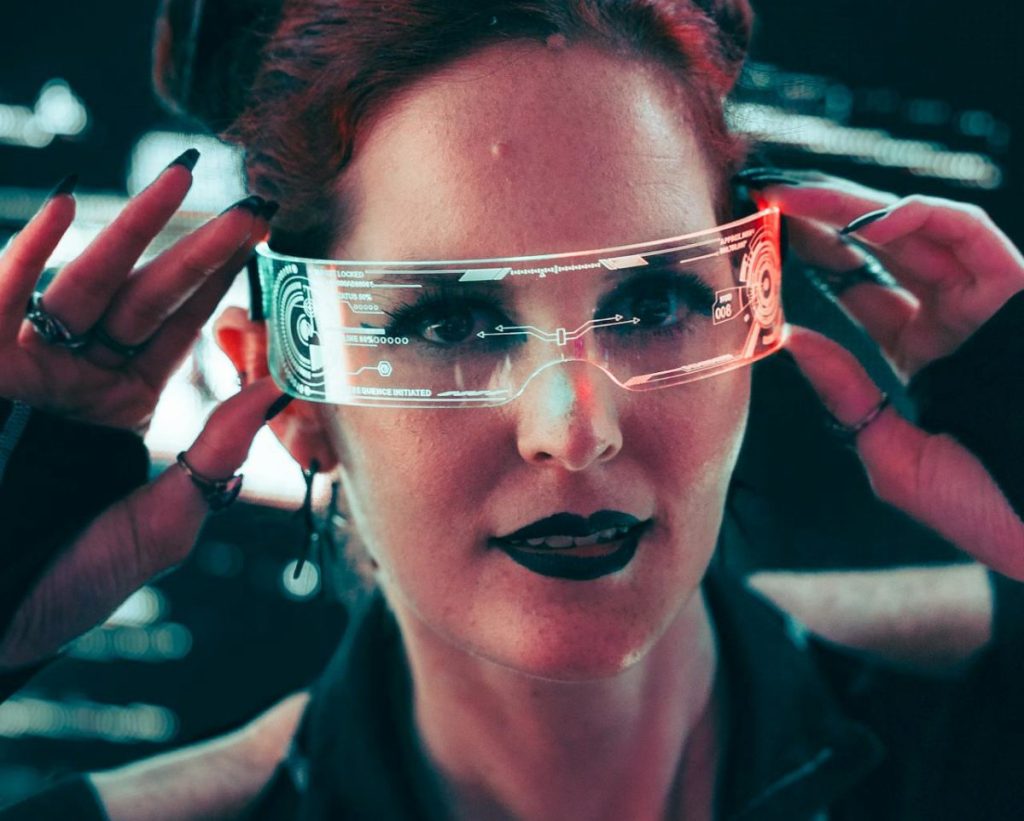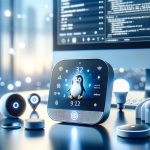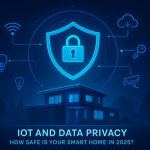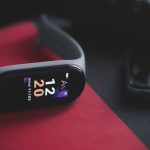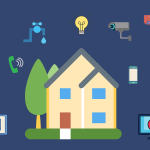How Smart Glasses Fit into IoT? The world of technology is evolving faster than ever before, with the Internet of Things (IoT) playing a central role in shaping our daily lives. From smart homes to wearable devices, IoT connects everything around us. Among the various IoT devices, smart glasses are emerging as one of the most innovative and exciting advancements. But how exactly do smart glasses fit into the broader IoT ecosystem? In this article, we’ll explore how these futuristic devices work, their potential applications, and how they are transforming the way we interact with technology.
What Are Smart Glasses?
Smart glasses are a wearable device that combines eyewear with advanced technology. They typically have built-in displays, sensors, cameras, microphones, and sometimes even speakers. By integrating these features, smart glasses can provide real-time information and augmented reality (AR) experiences directly within your line of sight.
These glasses use various IoT protocols, including Wi-Fi, Bluetooth, and even 5G, to connect to other smart devices, collect data, and interact with the cloud. Think of them as a bridge between the digital and physical world, offering hands-free access to information and services.
The Role of IoT in Smart Glasses
Smart glasses, like other IoT devices, thrive on connectivity. By being part of the IoT network, they can seamlessly interact with other devices around you, making life more efficient, convenient, and productive. Here’s how:
- Real-Time Data Sharing and Access Smart glasses can connect to the cloud to retrieve real-time data or interact with other IoT devices, such as smart home systems, wearable health devices, or even industrial machinery. For instance, you can control your smart home lights, thermostat, or security cameras just by using voice commands through your smart glasses.
- Remote Assistance Some smart glasses come with video calling and live-streaming capabilities, allowing users to receive real-time assistance remotely. Imagine a technician using smart glasses to receive guidance from an expert while working on a complex repair. This connectivity is made possible through IoT networks, allowing seamless communication and instant problem-solving.
- Health and Fitness Integration Fitness enthusiasts can benefit from smart glasses that track their health and fitness metrics. These glasses could be connected to wearables, such as fitness trackers or smartwatches, to display data like heart rate, calories burned, and exercise progress right on the lenses. Some glasses also have built-in sensors that track user activity and offer coaching or performance suggestions. Through IoT, all of this data is automatically shared with cloud-based fitness apps for analysis and feedback.
- Augmented Reality (AR) Augmented reality is one of the most exciting features of smart glasses, and it heavily relies on IoT technology. AR smart glasses overlay digital information on the real world, enhancing user experiences. Whether it’s displaying directions on a map, providing translations, or showing product information while shopping, IoT networks enable these glasses to gather data in real time and project it into your field of vision. This hands-free experience is possible because of the IoT-enabled ecosystem that powers the devices.
- Voice Assistants Many smart glasses come equipped with voice-controlled assistants like Google Assistant, Alexa, or Siri. These assistants use IoT networks to process commands and retrieve information, whether you’re asking about the weather, setting reminders, or controlling IoT-enabled devices in your home or office.
How IoT Enhances Smart Glasses Functionality
The effectiveness of smart glasses comes from their ability to connect with other IoT devices. Here’s how IoT technology amplifies their functionality:
- Cloud Connectivity: Smart glasses rely on cloud-based computing for processing heavy tasks, such as rendering AR images or storing data. IoT allows for the exchange of information between the glasses and other connected devices, making them more intelligent and responsive.
- Integration with Other IoT Devices: Smart glasses can be integrated with other IoT devices in the ecosystem. For instance, when linked to a smart home system, they can control lights, adjust thermostats, and even unlock doors through voice commands. In the workplace, they can link to augmented reality software that guides employees through complex procedures or maintenance tasks.
- Security and Privacy: As IoT devices, smart glasses must also adhere to security protocols to protect user data. By using encrypted networks, two-factor authentication, and other cybersecurity measures, smart glasses ensure the privacy of your information while connected to the wider IoT network.
Popular Use Cases for Smart Glasses in IoT
- Business and Enterprise Use In the enterprise world, smart glasses are helping employees in manufacturing, logistics, and healthcare. For example, smart glasses can assist in hands-free product assembly, remote technical support, and real-time data analysis. They can even display safety instructions or troubleshooting steps while workers are on the job, without requiring them to stop and look at a device screen.
- Retail and Customer Experience Retailers are using smart glasses to enhance the customer shopping experience. By connecting to IoT-powered systems, smart glasses can provide product details, real-time stock updates, and personalized recommendations, all while users are walking through the store. This can improve the shopping experience, making it more interactive and informative.
- Healthcare Doctors and healthcare professionals are using smart glasses for hands-free access to medical records, surgical guidance, and telemedicine consultations. By integrating smart glasses with IoT-enabled health monitoring devices, healthcare professionals can improve patient outcomes through real-time data analysis and communication.
- Navigation and Tourism In tourism, smart glasses can offer augmented reality navigation and real-time translation services. By connecting to IoT-based systems, tourists can receive immediate location-based information, such as directions, historical data, or nearby attractions, making their travel experiences more enjoyable and informative.
Pros and Cons of Smart Glasses in IoT
Pros:
- Hands-Free Operation: Smart glasses allow for hands-free access to important information, improving convenience and productivity in various fields.
- Real-Time Data Access: IoT-enabled smart glasses can display data from connected devices instantly, providing more control over your environment.
- Augmented Reality: The integration of AR technology in smart glasses allows users to interact with the digital world in entirely new ways, enhancing both professional and personal experiences.
- Versatile Use Cases: Smart glasses are used in a variety of industries, from healthcare and business to entertainment and navigation.
Cons:
- Privacy Concerns: With cameras and microphones built into the glasses, there are privacy concerns about data collection and surveillance.
- Limited Battery Life: Despite advancements in battery technology, many smart glasses have limited battery life, which can affect prolonged usage.
- High Price Point: The advanced features of smart glasses come at a premium cost, which might not be affordable for everyone.
- Comfort and Design: Smart glasses can still feel bulky or uncomfortable for some users, especially when worn for extended periods.
Smart glasses are undoubtedly a fascinating advancement in the world of IoT, offering unique capabilities that integrate seamlessly into daily life. As IoT continues to evolve, the future of smart glasses looks promising, with innovations that could change the way we work, communicate, and interact with the world around us. By combining cutting-edge technology with connectivity, smart glasses have the potential to revolutionize various industries and enhance our personal experiences, making them a must-watch for anyone interested in the future of IoT.
- Designing a Smarter Home in 2026: What People Get Wrong About AutomationSmart homes were once science fiction, but today they’re a reality in millions of households. With voice assistants, smart plugs, and automated lighting systems, it’s easy to assume home automation is simply a matter of plugging in a few devices. Yet, many homeowners quickly discover that “smart” doesn’t always mean simple. In this article, we’ll…
- Automated Online Trading: How IoT is Redefining Financial MarketsIntroduction automated online trading In a world where milliseconds can decide millions, the fusion of Internet of Things (IoT) technology and automated online trading is reshaping global finance. What once relied solely on human judgment now increasingly depends on connected machines, real-time data, and predictive algorithms. From weather sensors influencing agricultural trades to smart logistics…
- The Role of Linux in IoT: Powering the Connected WorldThe Internet of Things (IoT) is everywhere—from smart homes and wearable devices to industrial automation and self-driving cars. Behind the scenes, one operating system plays a surprisingly dominant role: Linux. Known for its stability, flexibility, and open-source nature, Linux has become the backbone of countless IoT devices and platforms. But what makes Linux so well-suited…
- The Smart Home Revolution in 2025: How IoT is Transforming Everyday LivingIn the past decade, the vision of a truly smart home has moved from futuristic fantasy to everyday reality. As we step into 2025, the Internet of Things (IoT) has matured into a robust ecosystem, connecting appliances, security systems, lighting, and even entertainment devices under one seamless digital roof. The result? Homes that are safer,…
- IoT and Data Privacy: How Safe Is Your Smart Home in 2025? – IoT SecurityThe smart home revolution has made everyday life more convenient than ever. From voice assistants that control the lights to security cameras that send alerts directly to your phone, connected devices have become part of our daily routines. But with this convenience comes an important question: how safe is your personal data in a world…
